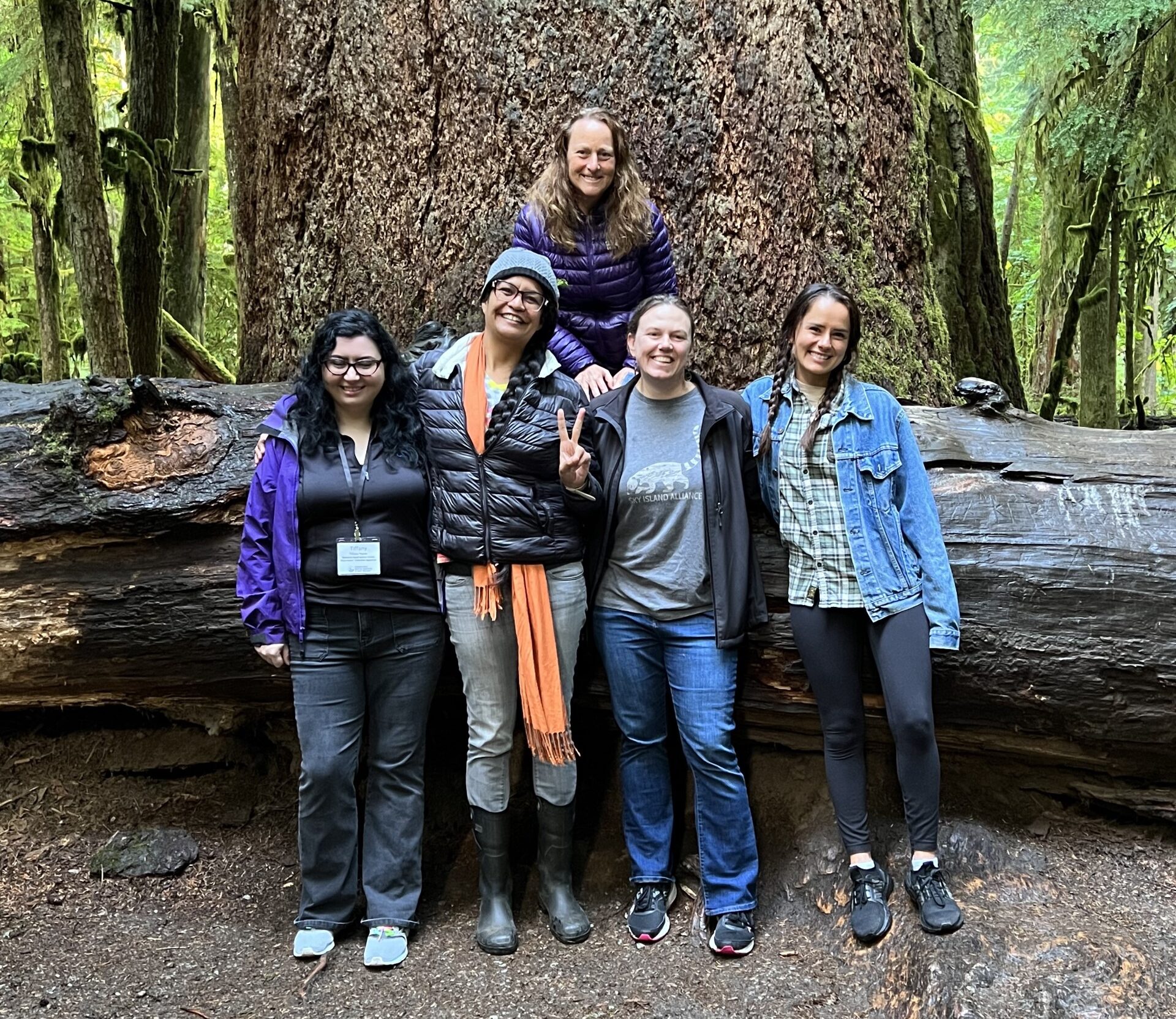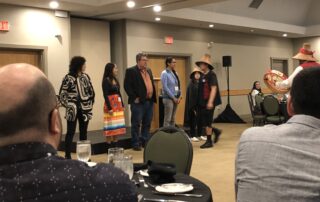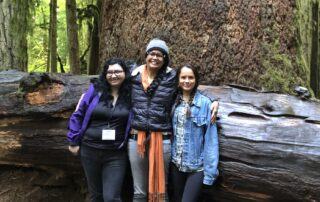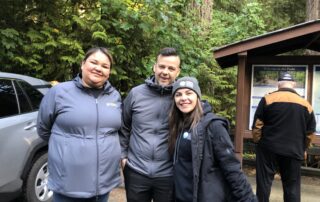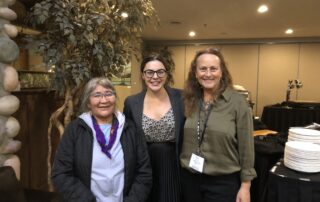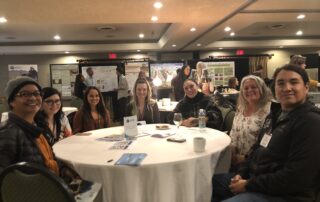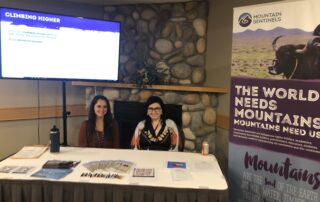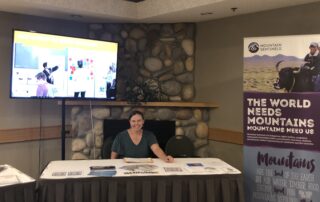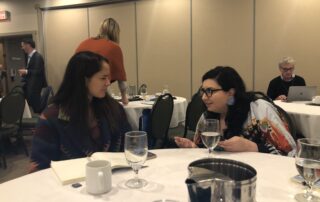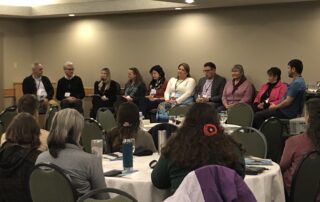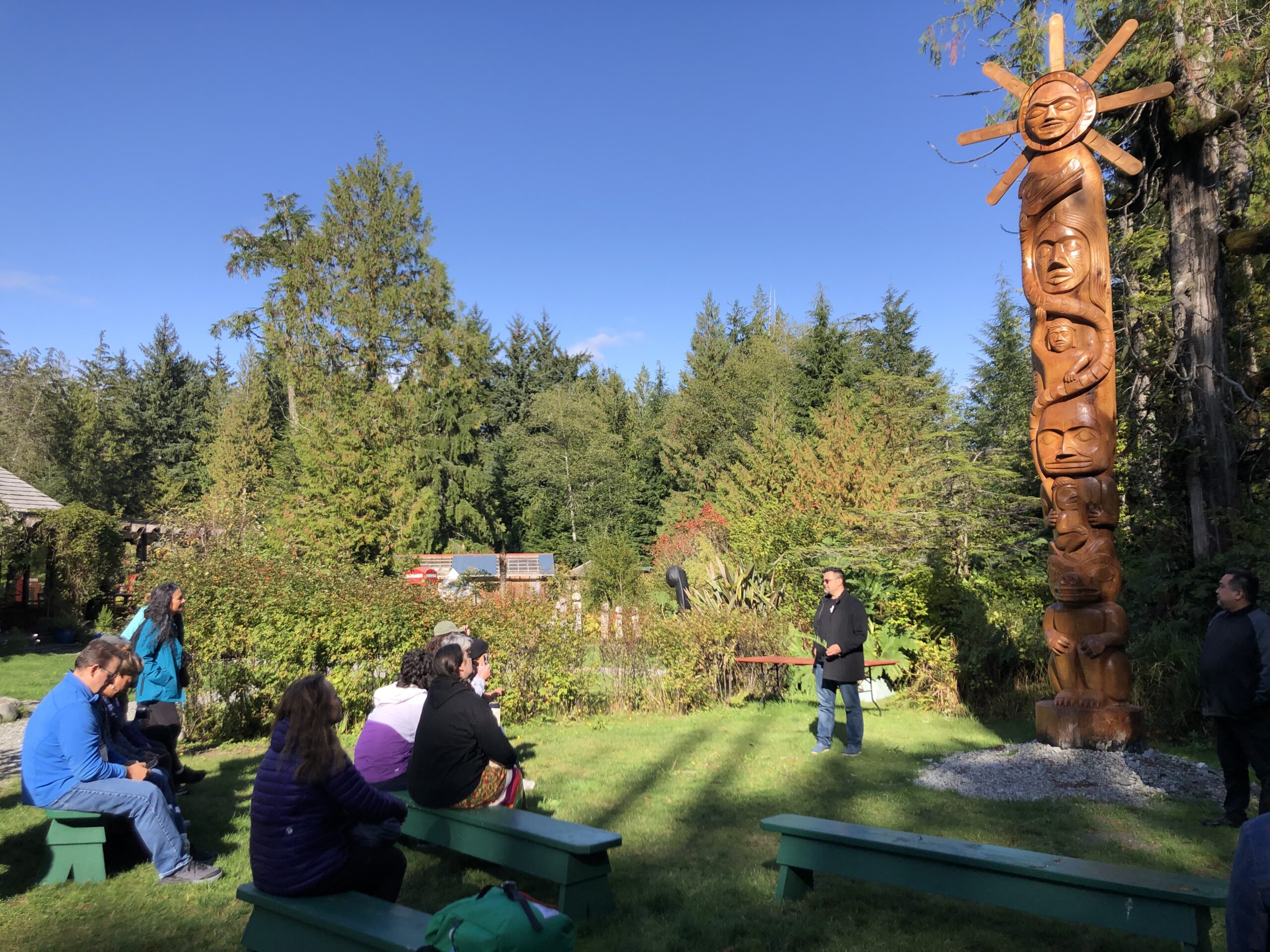By: Rowena Davis, Program Manager
In late September, I was fortunate enough to be one of five travelers from Mountain Sentinels who attended the Canadian Mountain Network’s (CMN) Knowledge Sharing Summit in Parksville, British Columbia on the traditional territory of the Coast Salish peoples, including the Snuneymuxw, Qualicum, and Snaw-Naw-As Nations. Over several days, Indigenous organizations and communities, university researchers, government, business, industry and not-for-profit partners and collaborators shared stories and experiences on the practice of braiding knowledges and Two-Eyed Seeing (integrating Indigenous and western knowledges) in environmental research and practice in and beyond mountain ecosystems. The Mountain Sentinels cohort consisted of Fellows Tiffany Pyette (writer, visual artist, and community organizer) and Dr. Katie Kamelamela (Assistant Professor, Arizona State University), Mountain Sentinels Director Dr. Julia Klein, and myself as Program Manager. Izabella Ruffino, a recent graduate of CU Denver’s Environmental Stewardship of Indigenous Lands program and Tribal & Indigenous Engagement Program Manager at the Nature Conservancy Colorado also joined our cohort. We attended the summit to learn from our Canadian collaborators, share our experiences, and deepen connections among our communities and each other.
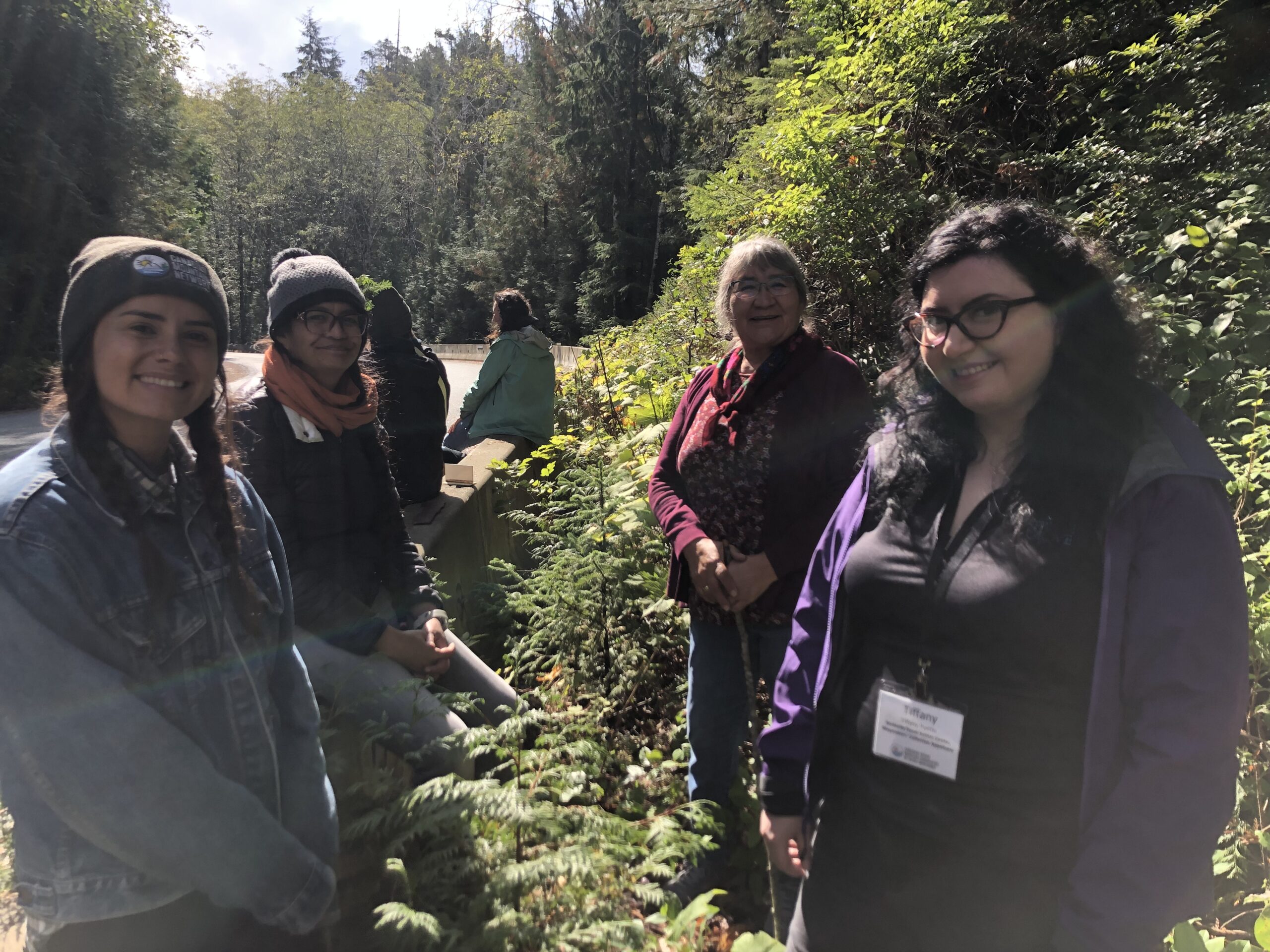
From left: Izabella Ruffino, Tiffany Pyette, Katie Kamelamela, Gùdia (Mary Jane Johnson) on the way to Clayoquot campus of the IISAAK OLAM Foundation.
A pre-Summit training day explored ethical pathways toward braiding ancestral Indigenous and western knowledges. Julia (also a research management committee member of CMN) was invited to join Gùdia Mary Jane Johnson, Lawrence Ignace, and other esteemed guests and Elders on a panel that reflected on approaches to communication and relationships between Indigenous and non-Indigenous communities. Later in the afternoon, all five Mountain Sentinels representatives served as table hosts for a World Cafe-stylex discussion on challenges, priorities, and approaches to ethical pathways toward braiding knowledges. Many voices in the room agreed on the importance of land-based learning and being on the land as a way to empower youth, develop skills, and share experiences across cultures and generations.
Over the next two days, the Summit showcased CMN’s work toward sustainable futures and progress toward developing a framework for western science to support Indigenous research goals. Ceremony and protocols throughout the Summit created a space for acknowledgement, gratitude, and sharing. Elder Jim Bob and Lawrence Mitchell from the Snaw-Naw-As Nation, provided a spiritual opening for the Summit, and Lawrence, with members of his family, enriched many Summit activities with stories, music, and dance. Tiffany notes that “seeing the powerful Indigenous leadership in each presentation, the following of protocol throughout (something I have never experienced in a summit setting,) has genuinely changed my belief of what is possible. I am so profoundly inspired. I have begun using my Tribal protocol again after seeing how well it was done.”
During the sessions, Indigenous-led and co-led teams described projects to enhance food sovereignty, restore ecosystem balance, and develop resources to share culture. Izabella reflects that “Hearing the experience and perspective of various Indigenous people on the idea of “braiding knowledge” of Indigenous ways of knowing and science was very valuable. Also, having members from the lands on which we were convening was very important not only to ground us, but especially to pay respect and acknowledge whose lands we are on.” Some sessions explored management of polar bears, bison, and caribou, demonstrating practical innovations between Indigenous and western approaches. One project that particularly resonated with Tiffany was “Revitalizing Tlingit Language and Traditional Laws,” to reconnect with ancestral laws, customs, and land relationships, making Tlingit river people experts in their laws for the sustainability of land and waters.
Tiffany reports that she has found herself discussing the “relaw” concept often since hearing about it at the Summit. Opportunities to learn from Elders and CMN knowledge holders were many. “Seeing how Dr Paulina Johnson conducted research throughout listening, co-authoring, and using protocol was very impactful to me. I always learn so much from our Elders too,” notes Tiffany. In addition to chances to learn directly from leaders and Elders, Tiffany, Katie, and Izabella hosted an informal round table discussion on the evening of Day 1 to share their personal and professional experiences and build community.
Every session, conversation, and event highlighted deep connections with the land, but two experiences held particular inspiration. A screening of the film “Ch’indee Neekaii Gwits’at: Nankak Gatr’onahtan (From Both Eyes, on the Land We Learn)” showcased a land-based training camp that brought Elders together with Indigenous and non-Indigenous youth to share knowledge, and illustrated the power and rewards of land-based learning opportunities. Our group also had the opportunity to travel to Tofino to visit the Clayoquot campus of the IISAAK OLAM Foundation. The Foundation shares knowledges and builds capacity for Indigenous Protected and Conserved Areas (IPCAs) in Canada by incubating programs and supporting Indigenous leadership. Their programs include conservation of biological and cultural diversity, building resilient communities, and developing ways for (re)connecting people with their environment. In addition to being a beautiful, intentional space for learning and gathering, the Foundation demonstrated far-reaching community work and impacts. Tiffany notes, “The visit to IISAAK OLAM let me see something I did not know could be real. It has given me clarity in how the voluntary land tax work back home that I’ve been working on can actually be part of creating a hub of culture and community while protecting the land we may acquire.” Izabella agrees with the potential for deep impact, adding, “The most exciting/inspiring thing to me was the field trip to Tofino to see the Clayoquot campus and IISAAK learning lodge.”
I hope that projects and initiatives that embrace two-eyed seeing and honor the land, culture, and ancestral knowledge can represent the future of conservation and ecosystem science. I remain in deep gratitude for the stories shared, connections made, and the experiences built together.

